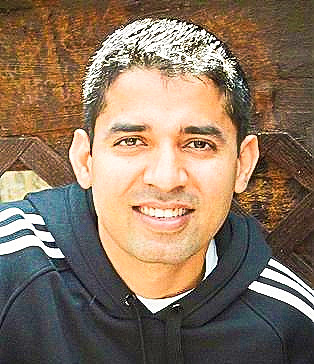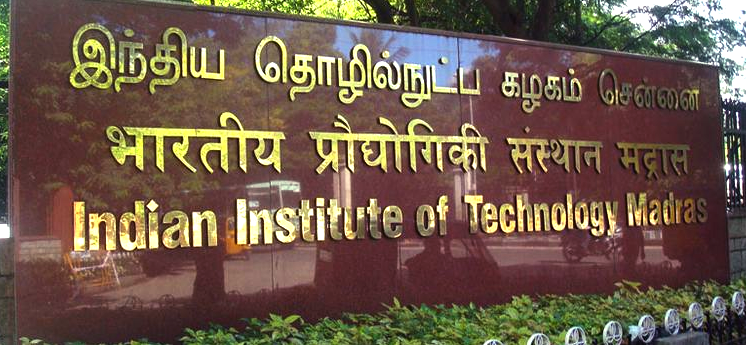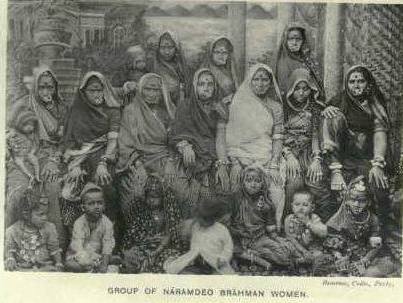Preshit Ambade
 India Needs to Change its Health Policy Discourse to Understand Dalit Agitation
India Needs to Change its Health Policy Discourse to Understand Dalit Agitation
Systemic deprivation of Dalits and other communities of social resources has resulted in substantial health disparities. India’s health policies are blissfully ignorant towards socioeconomic conditions of the Dalits and other backward communities, and its relation to their overall health status. The agitations following the Bhima-Koregaon incident also have their roots in widespread discontent among Dalits. Such protests are a warning bell for the country’s public health researchers and policymakers, to bring their attention to the social realities of not just Dalits, but also other backward communities. The health policy exposition from the western world – mainly from the United States – divulging racial and ethnic disparities provides useful insights for India to drive its attention towards its social realities.
~
The recent Dalit assertion and protests after the Bhima-Koregaon incident were not only an effort to solidify the community’s unity and identity, but they also stemmed from the constant denial of social resources to them. The systematic rejection and deprivation of community assets has resulted in substantial health disparities for Dalits. However, health policy discourse in the country particularly lacks attention toward the social determinants of health, and often neglects the realities and actual needs of these communities. Poor living conditions, unemployment, and dangerous working environments along with modern practices of social exclusion shape contemporary Dalit life in India.
Media outlets like NDTV India[1] projected the rising trend of higher education among Dalits as a marker of social progress. While it is true that education is a good indicatorof wellbeing in general, one must not neglect the other important pillar of human development, i.e., health. Educational triumph cannot be the only instrument for measuring the social advancements of any community. Other important factors such as living conditions, social relations, and access to financial and other resources determine health and overall human development. On these fronts, there has been no significant improvement, not only for Dalits but also for Scheduled Tribes and Other Backward Communities including Muslims.
The neighborhoods we live in play an essential role in determining our health. High crime rate, lack of access to civic amenities, and low-quality food can severely affect overall health conditions. Often, Dalits and other backward communities who leave their villages and migrate to cities in hope of better opportunities end up living in impoverished neighborhoods having no or limited access to civic amenities like drinking water, electricity, sewerage system, etc. Such neighborhoods (called jhopadpattis or jhuggis) are usually located on encroached land leased from the local land mafia, or in extremely unsafe areasthat others do not prefer to live in. These communities’ access to civic amenities depends on political and technical connections they make with the city’s infrastructure[2]. The socio-physical climate in these neighborhoods is obviously not conducive for an individual’s health and overall development. The situation is no different for those Dalits who remain in the rural areas of the country. Dalit habitations are usually situated on the fringes of the villages, affecting their access to various community resources. Consequently, centuries-old social deprivation continues to follow a Dalit’s life everywhere.
The link between education and health is not concrete. One needs to ask: Why do upper caste groups despite low education enjoy relatively better health status than educated backward communities? The positive effect of education on health is counteracted among Dalits and backward communities, when unemployment drags their educated youth to less rewarding and sometimes highly dangerous jobs. Upper caste youth generally shy away from manual employment for fear of social shaming. Out of necessity, the unemployed Dalit and backward community youth often do not hesitate to do such socially degrading work. The jobs acquired in the informal sector by these communities, such as sewage cleaning, construction, household cleaning, mining, etc., do not offer adequate safety systems and often lead to occupational injuries and casualties. Caste-based discrimination manifests in the labor market as well, where Scheduled Caste (SC) and Scheduled Tribe (ST) workers are discriminated and paid less in comparison to their counterparts[3].
Moreover, SC/ST communities bear most of the brunt of a crumbling health system. The National Family Health Survey (NFHS) reveals the high prevalence of undernourishment and anemia among SC/ST women and children[4], [5], [6]. The nature of social relations with the healthcare workforce influences health outcomes for these communities. Similar to other sectors, the poor representation of backward communities in the healthcare industry is palpable[7]. Also, lower caste healthcare workers face discrimination from their peers and colleagues[8]. On the other hand, lower caste beneficiaries are discriminated against by upper caste healthcare providers[9]. Social security schemes such as Rashtriya Swasthya Bima Yojana (RSBY) are ideally meant to benefit the below poverty line (BPL) families, of which nearly fifty percent belong to the SC/ST communities[10]. However, as shown by recent studies, the RSBY has been ineffective in reducing out-of-pocket health care spending by BPL families[11], 12], thus directly impacting the economic condition of poor SC/ ST families.
The public health disquisition in India often ignores these social realities of backward communities, associated with their place in a social hierarchy based on a rigid caste-system. The National Family Health Surveys shed some light on health disparities across different social groups. However, these disparities do not acquire center stage in public health policy debate. Barring a few exceptions like NFHS, nationally representative surveys are neither collected nor interpreted with a focus on caste-based health disparities. In fact, caste is always sidelined as a ‘co-variate’, having no separate effect on health outcomes. However, as evident from the preceding discussion, the impact of caste on social conditions including health is profound, and it is time to expand our understanding of this issue for meticulous analysis.
Health policy exposition from the western world, particularly from the United States, that divulges racial and ethnic disparities provides useful insights for India. ‘Food deserts’ in the US created on the basis of demographic transition and racial segregation leave fewer options for impoverished communities to access healthy food[13],[14]. Living in an insecure neighborhood and having less access to civic amenities also affects individual health severely[15]. The skewed distribution of tobacco selling and liquor stores near Black neighborhoods severely affects the social conditions they live in today, trapping them in a vicious cycle of gun violence, racial profiling and lack of opportunity[16],[17],[18]. Life expectancy can even differ across neighborhoods within the same city[19] due to the aforementioned factors. Black, Hispanic, and Native American communities therefore bear a disproportionately high burden of communicable and chronic diseases[20],[21],[22]. Thus, the health disparity dialogue from the United States (even though not adequately) attempts to reveal the impact of race on various aspects of minority life. Such diverse conversations on health disparities based on caste translating into effective public health is policies lacking in India.
Gramsci once wrote that,
“any given civilization” is so fractured by inequality, that understanding
it requires us to begin with that inequality; those “most elementary things,
which are the first to be forgotten”; the fact that “there really do exist rulers
and ruled, leaders and led.”[23]
Hence, the health policy discourse in India needs to begin with caste-based social inequalities first, followed by income and regional variations, rather than doing the opposite. Questions similar to those from the United States’ context need to be asked regarding the condition of Dalits and backward communities in India. Where are the liquor shops located? Who lives in most troubled neighborhoods of the cities? What effect do these neighborhoods have on the health of their residents? What is the impact of lack of civic amenities on the communities living in socioeconomically poor neighborhoods? How do occupational hazards in the unorganized sector disproportionately affect health conditions of marginalized groups? How do availability of low-quality food and other services contribute to the poor health of backward communities? How do social relations play an essential role in health care access in rural and urban settings? Do poor living conditions, hazardous work conditions, and social deprivation disproportionately increase the vulnerability of Dalits and other backward communities?
The answers to these questions can truly address the health inequities present in Indian society, where they are created by the country’s enduring socio-political system, in which influential groups from the past still control most of the resources. Such social disparity analyses are needed to transcend not only health policy, but other development debates as well, to solidify our efforts towards creating equitable opportunities for all sections of society. The agitations following the Bhima-Koregaon incident are an alarm bell for the country’s public health researchers and policymakers, to bring their attention to the country’s social realities and attend to them adequately. The sooner we address these problems, the better off we are, towards reaching our goal of building healthy communities based on social justice.
~
References
1. महाराष्ट्र में क्यों फूटा दलितों का आक्रोश? वीडियो- हिन्दी न्यूज़ वीडियो एनडीटीवी ख़बर. (2018, January 03). Retrieved January 05, 2018, from https://khabar.ndtv.com/video/show/prime-time/maharashtra-bandh-by-dalit-groups-that-hit-mumbai-and-other-parts-of-the-state-475888
2. Anand, N. (2012, November 02). Pressure: The PoliTechnics of Water Supply in Mumbai. Retrieved January 05, 2018, from https://culanth.org/articles/64-pressure-the-politechnics-of-water-supply-in
3. Madheswaran, S., & Attewell, P. (2007). Caste Discrimination in the Indian Urban Labour Market: Evidence from the National Sample Survey. Economic and Political Weekly, 42(41), 4146-4153. Retrieved from http://www.jstor.org.ezproxy3.library.arizona.edu/stable/40276549
4. Ramaiah, A. (2015). Health Status of Dalits in India. Economic and Political Weekly,1(43), 70-74. Retrieved January 05, 2018, from http://questforequity.org/contents/Papers/Case%20for%20Caste-based%20Quotas%20in%20Higher%20Education,%20Avatthi%20Ramaiah..pdf
5. International Institute for Population Sciences (IIPS) and Macro International. 2007. National Family Health Survey (NFHS-3), 2005–06: India: Volume I. Mumbai: IIPS.
6. Vart, P., Jaglan, A., & Shafique, K. (2015). Caste-based social inequalities and childhood anemia in India: results from the National Family Health Survey (NFHS) 2005–2006. BMC Public Health,15(1). doi:10.1186/s12889-015-1881-4
7. George, S. (2015, January). Caste and Care: Is Indian Healthcare Delivery System … Retrieved January 05, 2018, from http://www.bing.com/cr?IG=5303E5FA13A54E1D9FF0185CFC540D35&CID=3E6B4D4C1AA56016355546C81B0A6116&rd=1&h=vlzXsw3pv_V7YJjbaQhfjXeSsD7gF4RhX9fuW2jntsY&v=1&r=http%3a%2f%2fwww.isec.ac.in%2fWP%2520350%2520-%2520Sobin%2520George.pdf&p=DevEx,5066.1
8. Sharma, R., Webster, P., & Bhattacharyya, S. (2014). Factors affecting the performance of community health workers in India: a multi-stakeholder perspective. Global Health Action,7(1), 25352. doi:10.3402/gha.v7.25352
9. Tandi, S., & Prabha, D. R. (2017). Utilisation of Health Care Mechanism to improve the Maternal Health Services of Dalit Women in Odisha. International Journal for Innovative Research in Multidisciplinary Field,3(7), 384-392. Retrieved January 06, 2018.
10. Ghildiyali, S. (2011, April 12). SCs/STs form half of India’s poor: Survey. The Times of India. Retrieved January 07, 2018, from https://timesofindia.indiatimes.com/india/SCs/STs-form-half-of-Indias-poor-Survey/articleshow/7953487.cms
11. Azam, Mehtabul, Does Social Health Insurance Reduce Financial Burden? Panel Data Evidence from India (May 3, 2016). Available at SSRN: https://ssrn.com/abstract=2774452 or http://dx.doi.org/10.2139/ssrn.2774452
12. Karan, A., Yip, W., & Mahal, A. (2017). Extending health insurance to the poor in India: An impact evaluation of Rashtriya Swasthya Bima Yojana on out of pocket spending for healthcare. Social Science & Medicine,181, 83-92. doi:10.1016/j.socscimed.2017.03.053
13. Cummins, S. (2002). “Food deserts”—evidence and assumption in health policy making. Bmj,325(7361), 436-438. doi:10.1136/bmj.325.7361.436
14. Living in a Food Desert: How Lack of Access to Healthy Foods Can Affect Public Health. (2013, November 04). Retrieved January 07, 2018, from https://notes.nap.edu/2011/01/25/living-in-a-food-desert-how-lack-of-access-to-healthy-foods-can-affect-public-health/
15. Neighborhoods and Health Issue Brief 9-24-08. (2008, September). Retrieved January 3, 2018, from http://www.bing.com/cr?IG=E59923E3158147A589634E02930EB1E6&CID=1AFD5188D42D66613F6C5A0CD58267CF&rd=1&h=GBXLrzIW8cubb97yJg-n2YgpHm_UuC05IbezwuRMRqQ&v=1&r=http%3a%2f%2fwww.commissiononhealth.org%2fPDF%2f888f4a18-eb90-45be-a2f8-159e84a55a4c%2fIssue%2520Brief%25203%2520Sept%252008%2520-%2520Neighborhoods%2520and%2520Health.pdf&p=DevEx,5066.1
16. Crist, C. (2017, March 16). Poor, minority neighborhoods have more tobacco-selling shops per capit. Retrieved January 07, 2018, from https://www.reuters.com/article/us-health-tobacco-race-disparities/poor-minority-neighborhoods-have-more-tobacco-selling-shops-per-capita-idUSKBN16N2VR
17. Laveist, T. A., & Wallace, J. M. (2000). Health risk and inequitable distribution of liquor stores in African American neighborhood. Social Science & Medicine,51(4), 613-617. doi:10.1016/s0277-9536(00)00004-6
18. Reeves, R. V., & Hoimes, S. (2015, December 15). Guns and race: The different worlds of black and white Americans [Web log post]. Retrieved January 06, 2018, from https://www.brookings.edu/blog/social-mobility-memos/2015/12/15/guns-and-race-the-different-worlds-of-black-and-white-americans/
19. Birth Place and Life Expectancy: A Look at American Cities. (2018, January 26). Retrieved January 06, 2018, from https://www.rwjf.org/en/library/articles-and-news/2015/09/city-maps.html
20. CDC. Health disparities experienced by Black or African Americans— United States. MMWR 2005;54(01):1-3
21. Vital Signs. (2015, May 05). Retrieved January 06, 2018, from https://www.cdc.gov/vitalsigns/hispanic-health/index.html
22. Disparities | Fact Sheets. (2017, April). Retrieved January 06, 2018, from https://www.ihs.gov/newsroom/factsheets/disparities/
23. Crehan, K. (2016). Chapter-3: Common Sense. In K. Crehan, Gramsci’s Common Sense- Inequality and Its Narratives (pp. 43-58). Durham and London, UK: Duke University Press.
~~~
Dr. Preshit Ambade, BAMS, MHA is a public health professional currently pursuing his doctoral studies at Mel and Enid Zukerman College of Public Health (MEZCOPH), University of Arizona, Tucson, USA. Twitter: @PreshitAmbade










